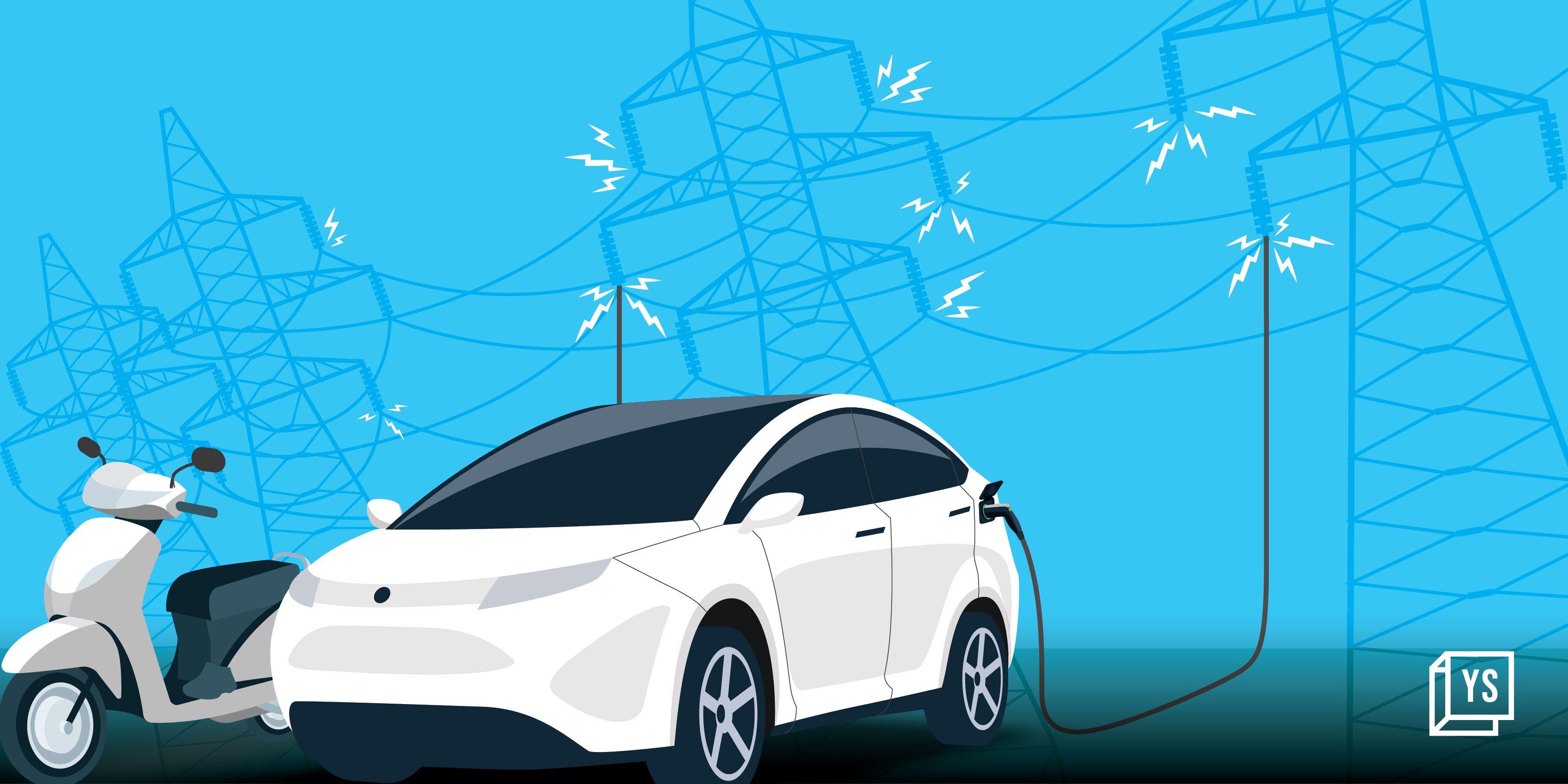
Electric vehicles (EVs) in India have gained significant traction, emerging as a convenient alternative to traditional ICE vehicles. The country’s growing concern with reducing carbon emissions and combating climate change has been the driving force behind this trend.
Moreover, the government’s policies, growing charging infrastructure, cutting-edge battery technology, and the emergence of new-age automakers are making EVs accessible to Indian consumers. As a result, there was a spike in EV sales in the country during FY23.
According to Vahan data, cumulative sales of EVs in India as on March 31, 2023 were 11,71,944 units, with two-wheelers dominating the market with a whopping 7,20,000 units. This is a testament to the fact that the EV market in India is growing rapidly.
The market is anticipated to grow even further. The Indian EV market is expected to grow from $5.61 billion in 2023 to $37.68 billion by 2028, at a CAGR of 46.38%, according to a report by Mordor Intelligence. This rapid adoption of EVs in India is driven by certain cost factors and financial incentives provided by the government.
Exploring the cost factors
Even if EVs are an important instrument for attaining a sustainable environment and reducing the world’s dependence on fossil fuels, the cost of the car is still a big barrier for many consumers who are considering buying one.
However, here is a comparison of EVs with their counterpart ICE vehicles in terms of total cost of ownership (TCO) and running costs.
Total cost of ownership: An EV has a higher upfront cost than a conventional vehicle. However, when we compare the operational cost breakdown over a 10-year period for both types of vehicles, we realise that the ICE vehicle’s cost of ownership is much greater than that of the EV.
In a study by WRI India, the TCO of EVs was found to be lower than that of ICE vehicles, supporting the argument that EV ownership is preferable and cost-efficient in the long run.
Running costs: EVs use electricity, which is more cost-effective than fuelling a vehicle with fossil fuels. A NASSCOM study comparing ICE and EV two-wheelers revealed that the standard ICE vehicle’s operating costs over a 10-year period are nearly three times higher than those of an EV.
Furthermore, due to the reduced number of moving parts in electric motors and other drivetrain components, maintenance costs for EVs are also lower. As they require no oil changes, air filter replacements, or engine maintenance, they do not need as much maintenance as ICE-powered vehicles do.
Role of battery technology in EV costs
As battery technology improves, there is a plunge in the cost of manufacturing the batteries. For instance, automakers have two battery types available for use in their EVs: nickel manganese cobalt (NMC) and lithium ferro phosphate (LFP).
However, the LFP battery outperforms NMC in terms of sustainability, efficiency, safety, and durability. When its enhanced energy density is combined with effective battery management systems, it helps to improve the overall performance of EVs, increasing the perceived value of owning an EV.

As automakers and OEMs work to enhance the batteries, the overall costs of EVs will also get lower. EV manufacturers will further benefit from the law the Indian government passed recently that allows them to mine and auction lithium and other critical minerals for EV batteries.
In addition, as the mining of these reserves is open to the private sector, automakers will be able to reduce the costs of battery technology thanks to the abundance of resources.
How government initiatives are driving EV adoption
Government’s initiatives: The Indian government has set a target of electrifying 30% of the country’s fleet of vehicles by 2030 and has put in place a number of rules and incentives to support the growth of the EV sector.
The government’s programmes and policies, including FAME-I (Faster Adoption and Manufacturing of Electric Vehicles), FAME-II, PLI (Production Linked Incentive), have helped to boost indigenous manufacturing and a number of OEMs and automakers. Due to the supportive business environment, the EV industry in India is experiencing substantial growth, and it is now economically feasible to purchase an EV.
Tax benefit: The Indian government has lowered the GST (goods and services tax) from 12% to 5% in an effort to accelerate the adoption of electric vehicles. Additionally, states have been urged to lower the road tax on the purchase of EVs by the Ministry of Road Transport and Highways. As a result, a number of state governments have waived registration costs and also provided discounts on motor vehicle and road taxes.
Participation of banks and NBFCs: Recognising the sector with the highest priority for retail finance is essential to strengthening the EV ecosystem. Financial institutions, such as banks and non-banking financial companies (NBFCs), have a significant role to play in the country’s rapid adoption of EVs in this regard. They are offering appealing financing options with low interest rates, thereby lowering the cost of EVs for the end user.
In an effort to entice customers, automakers are also working with financial institutions to offer special financing deals. A collaborative analysis by Niti Ayog and the Rocky Mountain Institute claims that, by 2025, banks and NBFCs might reach a financing market size of Rs 40,000 crore for EVs.
A needed evolution
Mass adoption of EVs has the potential to decrease the environmental effects of transportation. In addition to this, it also results in lower manufacturing costs for EVs. The increased demand will enable streamlined production processes, smooth supply chain operations, continuous product refinement, and faster R&D.
Overall, increased EV adoption fosters conditions wherein higher production volumes and technological advancements combine to sharply reduce manufacturing costs.
Depending on the source of the power used to charge EVs, the zero direct emissions during EV operation will contribute to a reduction in greenhouse gas emissions. Additionally, the potential for EVs to reduce emissions is considerably higher if the electricity is generated using renewable resources like solar or wind energy.
Global greenhouse gas emissions from transportation would also be reduced by roughly 60% by 2050 if all passenger cars and light-duty trucks are converted to EVS, according to research by the International Council on Clean Transportation.
In this context, the governments of various nations are taking major steps to promote the adoption of EVs, while taking all these factors into account. By reducing the overall costs of EVs, constantly improving battery technologies, and implementing initiatives for OEMs and automakers, the target of zero emissions can be successfully achieved.
The author is the managing director of Okaya Electric Vehicles.
Edited by Swetha Kannan
(Disclaimer: The views and opinions expressed in this article are those of the author and do not necessarily reflect the views of YourStory.)



![Read more about the article [Jobs Roundup] Interested in spacetech? These openings at Bellatrix Aerospace might help your career to take o](https://blog.digitalsevaa.com/wp-content/uploads/2021/02/spacetechimage-1600942442854-300x150.jpg)



![Read more about the article [Weekly funding roundup May 2-6] Steep rise in venture investments](https://blog.digitalsevaa.com/wp-content/uploads/2022/03/funding-roundup-1-1639749230575-300x150.png)


